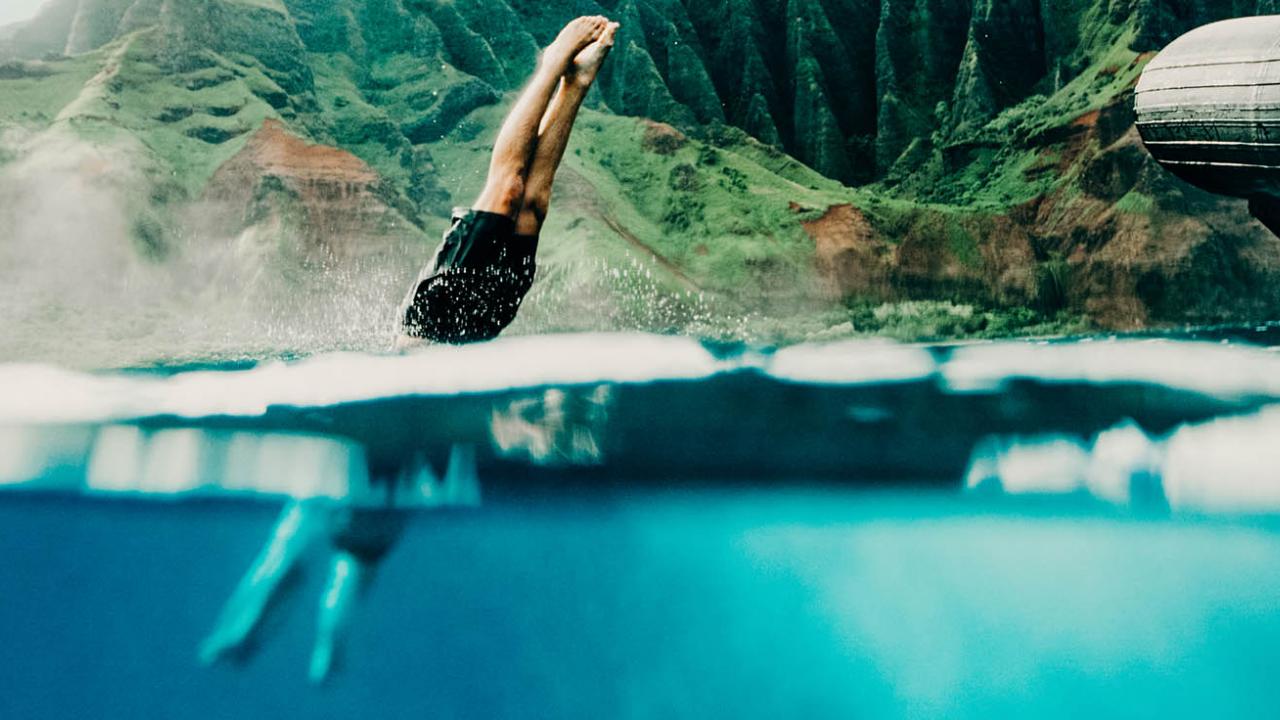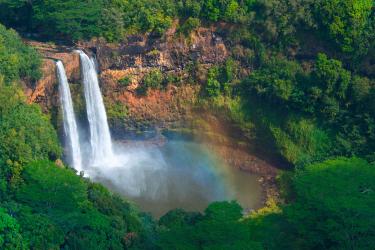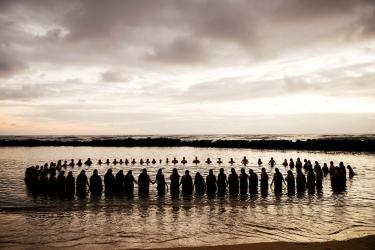
Please keep the following tips in mind as you consider writing about and visiting Kauaʻi, one of the most special places on the planet. Mahalo for doing your part to responsibly promote and protect the Hawaiian Islands.
How We Work with Media
The Kauaʻi Visitors Bureau (KVB) works with U.S.-based media to tell the unique stories about Kauaʻi, its culture and the people who call the island home. Our public relations team can assist with fact checking, story ideas, recommendations, images and more. We also consider media support for qualified journalists or broadcast productions, and the level of support is based on our resources, type of content and outlet, time of year and budget. To be considered for a sponsored media visit, please complete our Travel Assistance Questionnaire and keep the following important factors in mind:
- Due to the volume of requests, we request at least six (6) weeks notice for sponsored media visits. In working with members, and industry partners, KVB requires adequate time for evaluation and coordination of all travel logistics.
- All media receiving travel assistance to Kauaʻi from KVB are required to complete a Waiver and Release Form.
- KVB only provides travel assistance for qualified media on assignment. If you are traveling with a writing partner or photographer, he/she must complete a separate form to be considered for assistance.
- We do not provide attractions passes for media.
Sensitive Destinations and Activities
There are areas and activities that the Kauaʻi Visitors Bureau does not promote, and does not support editorial, video, photographic and social media coverage due to safety, trespass and other reasons. Please reference island specific pages as a reference guide for areas and activities NOT to include in your promotion of Kauaʻi in any medium.
- Kauaʻi's North Shore
- Kalalau Trail: The trail is not for casual and/or unprepared hikers and backpackers. If promoting the trail, please encourage users to check current trail conditions, weather, stream and ocean conditions in the area before embarking. Overnight stays require a camping permit. Please be prepared with appropriate hiking provisions.
- Kēʻē Beach: Do not promote due to overpopulation and community concerns.
- Lumaha‘i Beach: Do not promote or engage in swimming and all other recreational water activities. Dangerous offshore currents.
- Hanalei Beach and Bay: Do not promote due to community concerns about increased vehicular traffic on residential roads accessing the beach and bay, and limited parking and restroom facilities.
- NOTE: Following the devastating floods of 2018 on Kauaʻi’s North Shore, the Hawaiʻi State Department of Land and Natural Resources (DLNR) Division of State Parks has limited traffic to the area. All visitors to Hāʻena State Park, which includes the Kalalau Trail, Hanakāpi‘ai Falls and Kēʻē Beach on the island’s famed north shore, will be required to make an advanced online reservation prior to entering the park whether they are arriving in a private vehicle, shuttle, walking in by foot or on a bike. Anyone without a confirmed reservation will be denied access to the park and asked to turn around. For more information, visit: gohaena.com.
**The North Shore Shuttle may be suspended at this time due to COVID-19. Please visit kauainsshuttle.com for updates and more information.
- Queen's Bath: Do not promote or engage in any activity due to serious safety issues including offshore currents, high surf and rough ocean conditions.
- Māhāʻulepū Beach and Kawailoa Bay: Do not promote or engage in swimming and all other recreational water activities due to dangerous offshore currents and wave conditions. The beach and bay parking lots closes promptly at 6 p.m. daily.
- Keoneloa Bay (aka Shipwreck Beach): Do not promote or engage in jumping into the ocean from the area due to dangerous cliff heights and unpredictable ocean conditions.
- Spouting Horn: High surf and rough ocean conditions pose serious safety issues at the blowhole site. If promoting, please encourage visitors to comply with all warning signage and remain behind safe-distance barriers.
- Kauapea Beach (aka Secret Beach): Do not promote or engage in swimming and all other recreational activities due to dangerous offshore conditions. Promotion as a nude or clothing optional beach is not advised. There are no legal nude or clothing optional beaches in Hawaiʻi.
- Wailua Falls: Promotion of swimming or any water activities at the bottom of the falls is not advised. The base of the falls is on state-managed property and access is by permit only. If promoting, please encourage visitors to comply with all signage warning against trespassing beyond the Wailua Falls lookout.
- Polihale State Park: Do not promote or engage in recreational water activities due to dangerous offshore currents and because there is no lifeguard on duty. Unpaved access road.
Travel Tips
- Please respect the land, people and communities.
- Comply with all signage. Do not go beyond warning signage or safe-distance barriers.
- Check ocean conditions (ē.g. high surf warnings) and weather conditions (ē.g. flash floods) before venturing out. Adhere to lifeguard warnings and issuances.
- Note that taking rocks, sand and other natural materials is prohibited by law.
- Wear reef safe sunscreen. Hawaiʻi now bans the sale of sunscreen containing the coral-harmful chemicals oxybenzone and octinoxate.
- Keep your distance from Hawaiʻi marine animals including, but not limited to, monk seals, turtles and dolphins.
- Please do not embark on “off the beaten path” experiences if you are unsure of trespassing, safety and/or cultural restrictions.
Other Considerations
- A person may be from Hawaiʻi, but should not be referred to as “Hawaiian” unless they are of Native Hawaiian descent. Instead of “Hawaiian officials” or “Hawaiian residents” please say “Hawaiʻi officials” or “local residents.”
- For cuisine, it’s typically safe to say “Hawaiʻi cuisine/dish” over “Hawaiian cuisine/dish” since there may be some slight altering to recipes that may make the dish not “Hawaiian.
- HVCB and its Island Chapters recognize the use of the ‘ʻokina [ ‘ ] or glottal stop, one of the eight consonants of the modern Hawaiian language; and the kahakō [ā] or macron, a diacritical mark. However, we respect the individual use of the ‘ʻokina and kahakō for names of organizations and businesses. Certain non-English characters don’t always appear correctly on various web browsers, so we recommend omitting them for online content.
View and download the Ma‘ema‘e toolkit here.
Photography
- When selecting images, choose photos that capture an authentic moment. Please keep the following in mind as you’re searching for visual assets to complement your story:
- Images must reflect the correct island (do not use a Oʻahu image for a Kauaʻi story).
- Images must be shot in Hawaiʻi.
- Images should not be flipped, skewed or otherwise altered in a way that renders them visually inaccurate.
- Natural beauty is one of The Hawaiian Islands’ brand pillars, so images should not be over-edited or colorized.
- The use of drones is prohibited. Any exceptions must first be approved by the Federal Aviation Agency.





